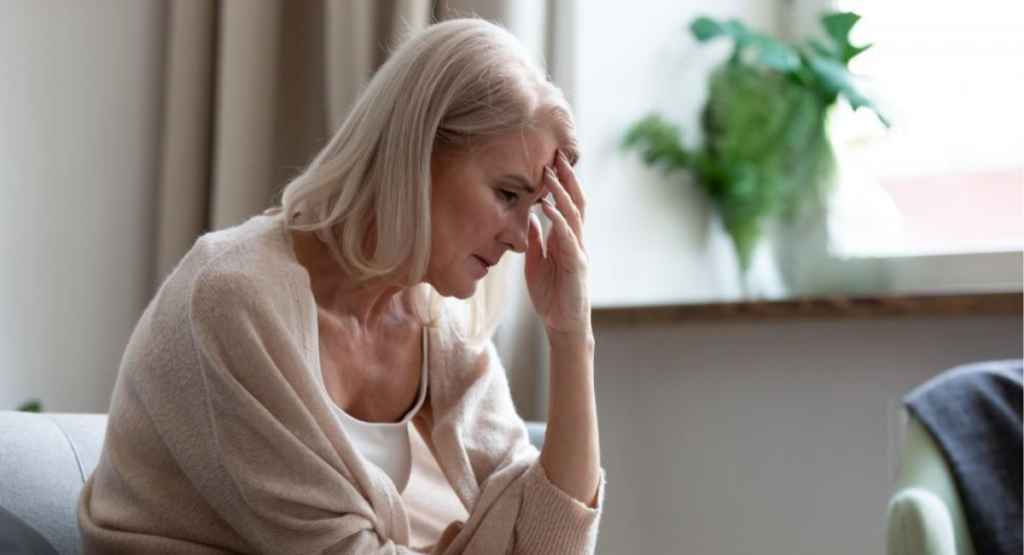A stroke is a life-altering event that can leave individuals grappling with physical and emotional challenges. Among the emotional hurdles often faced is anxiety, a common and understandable response to the significant life changes brought about by a stroke. Managing anxiety after stroke is crucial for the overall well-being and recovery of individuals. In this blog, we will explore the various methods and treatments available to address anxiety post-stroke, emphasizing the importance of a holistic approach that considers both the physical and mental aspects of recovery.
Causes of Anxiety After Stroke
The several reasons that may lead to anxiety after stroke include:
1. Uncertainty and Fear: A stroke can bring about a sudden and unexpected disruption to one’s life. The uncertainty about the future, fear of additional health complications, and concerns about the ability to regain independence contribute to heightened anxiety levels.
2. Physical Impairments: Physical limitations resulting from a stroke, such as paralysis or weakness, may lead to anxiety about one’s ability to perform daily activities, engage in hobbies, or return to work.
3. Cognitive Changes: Cognitive changes, including difficulties with memory and concentration, can impact an individual’s confidence and contribute to anxiety about cognitive abilities and decision-making.
4. Loss of Independence: The loss of independence, especially when it comes to activities of daily living, can be a significant source of anxiety. Dependence on others for basic tasks may lead to feelings of frustration and helplessness.
5. Emotional Impact: The emotional toll of a stroke, combined with potential changes in mood and temperament, can contribute to anxiety. Individuals may grapple with a range of emotions, including sadness, frustration, and even grief.
Common Symptoms of Anxiety After Stroke
The common symptoms that you are facing anxiety after a stroke include:
1. Excessive Worry: Anxiety often manifests as excessive worry about future events, health, or the ability to cope with challenges. Individuals may find their thoughts dominated by concerns and “what-if” scenarios.
2. Restlessness: Feelings of restlessness or being on edge are common symptoms of anxiety. Individuals may struggle to relax or find peace of mind due to an underlying sense of unease.
3. Difficulty Concentrating: Cognitive symptoms of anxiety can include difficulty concentrating or a sense of mental fog. This may be exacerbated by cognitive changes resulting from the stroke itself.
4. Physical Symptoms: Anxiety can manifest physically, with symptoms such as increased heart rate, trembling, sweating, and muscle tension. These physical manifestations can further contribute to a sense of discomfort.
5. Sleep Disturbances: Anxiety often disrupts sleep patterns, leading to difficulties falling asleep, staying asleep, or experiencing restorative sleep. Sleep disturbances can, in turn, exacerbate feelings of anxiety.
Methods for Managing Anxiety After Stroke
The methods that can help you with managing anxiety after stroke include:
1. Psychoeducation: Providing individuals and their caregivers with information about post-stroke anxiety is a crucial first step. Understanding that emotional challenges are a common part of the recovery process helps normalize the experience.
2. Counseling and Therapy: Engaging in counseling or therapy sessions, such as cognitive-behavioral therapy (CBT), can be highly effective in addressing anxiety. Therapists work with individuals to identify thought patterns contributing to anxiety and develop coping strategies.
3. Mindfulness and Relaxation Techniques: Mindfulness practices, including deep breathing exercises, meditation, and progressive muscle relaxation, can help individuals manage stress and anxiety. These techniques promote a sense of calm and focus on the present moment.
4. Support Groups: Joining support groups, either in person or online, allows individuals to connect with others who have experienced similar challenges. Sharing experiences, advice, and coping strategies fosters a sense of community and reduces feelings of isolation.
5. Physical Activity: Regular physical activity has been shown to have positive effects on mental health. Engaging in appropriate exercises under the guidance of healthcare professionals not only contributes to physical well-being but also helps alleviate anxiety.
Professional Treatments for Anxiety After Stroke
The professional treatment options that might help you with managing anxiety after stroke include:
1. Medication: In some cases, healthcare providers may prescribe medication to manage anxiety symptoms. Antidepressants or anti-anxiety medications may be recommended, and their usage should be closely monitored.
2. Neuropsychological Interventions: Neuropsychological interventions, including cognitive rehabilitation, focus on addressing cognitive changes that contribute to anxiety. These interventions aim to improve cognitive function and enhance coping mechanisms.
3. Integrated Care Plans: Collaborative care plans that integrate physical and mental health components are crucial in addressing anxiety after stroke. This may involve coordination between neurologists, physiatrists, psychologists, and other healthcare professionals.
Lifestyle Adjustments for Long-Term Anxiety Management
Listed below are the lifestyle management that will help you in managing anxiety after stroke throughout the course include:
1. Healthy Diet: Adopting a nutritious and well-balanced diet contributes to overall health and can positively impact mood. Certain foods, such as those rich in omega-3 fatty acids and antioxidants, are believed to have mood-enhancing properties.
2. Adequate Sleep: Prioritizing restorative sleep is essential for mental health. Establishing a regular sleep routine and creating a comfortable sleep environment can improve sleep quality and reduce anxiety.
3. Social Engagement: Maintaining social connections and engaging in activities with friends and family provide emotional support and counter feelings of isolation. Social interactions contribute to a sense of belonging and purpose.
4. Goal Setting: Setting realistic and achievable goals, both short-term and long-term, provides a sense of direction and accomplishment. Celebrating small victories along the way contributes to a positive outlook.
Conclusion
Managing anxiety after stroke is an integral part of the holistic approach to recovery. By combining psychoeducation, counseling, mindfulness techniques, and comprehensive healthcare services, individuals can navigate the emotional challenges that accompany stroke rehabilitation. Sukino Healthcare’s commitment to addressing both the physical and mental aspects of recovery underscores the importance of an integrated approach in promoting overall well-being. With the right methods and treatments, individuals can cultivate resilience, regain a sense of control, and work towards a fulfilling and meaningful life beyond the challenges of anxiety post-stroke.
We are India’s first comprehensive continuum care provider. We provide multidisciplinary out of hospital care to acute and post-acute and chronically ill patients at our critical care facilities and your home.


